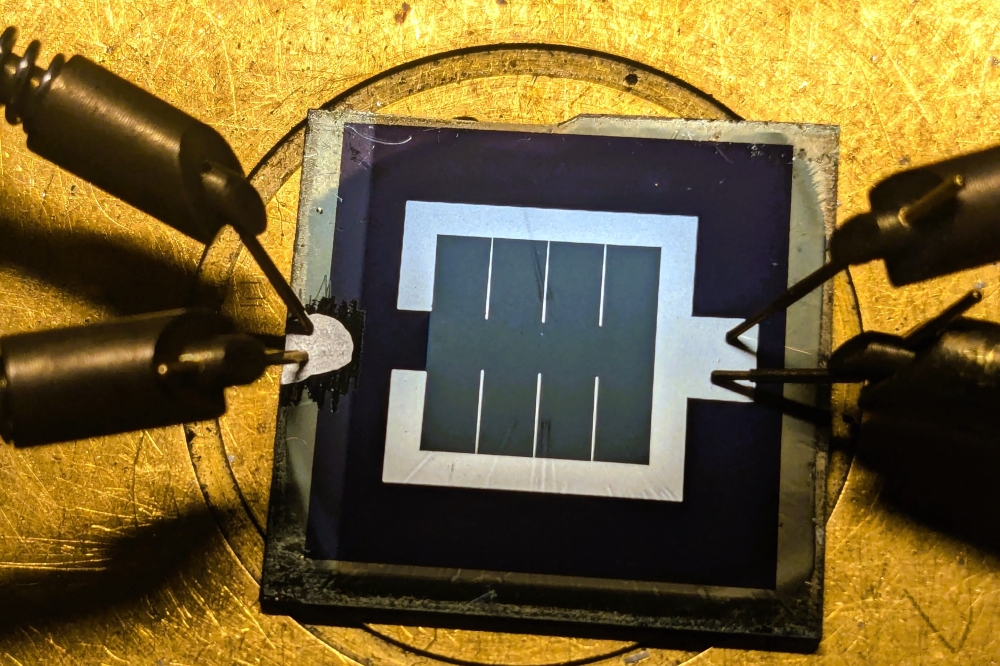LEDs and sunlight offer potential for cheap wireless communication
Edinburgh University technology could provide Internet for the cost of a solar-panel and an LED light
![]()
A research team at the University of Edinburgh's Li-Fi R&D Centre, led by Harald Haas, has shown how Li-Fi (wireless optical networking using LEDs for data transmission) can be used with solar cells to receive data.
Demonstrated at this year's TED Global 2015 event in London, the prototype was built in a collaboration between the University of Edinburgh's Li-Fi R&D Centre and pureLiFi Ltd, a University of Edinburgh spin-out pioneering using visible light for wireless data communication.
Visible light communication (VLC) is a new application for LEDs with the potential to dramatically increase wireless data traffic constricted by limited available RF spectrum. It works by modulating the optical output of an LED at extremely high speeds. The modulated light can be detected by a photo-detector receiver which converts it to electrical current.
The scope for using the technology for wireless data communication is considerable: in June this year, a team from the University of California, Santa Barbara demonstrated 4Gbps data rate at room temperature with a commercial high power 450nm GaN laser diode.
"The potential expansion to the internet is massive and my aspiration is that this broadband solar panel receiver technology for Li-Fi will help solve the challenges of the digital divide throughout the world, and catalyse the uptake of the IoT as connectivity and battery-free power supplies are essential if we want to connect a trillion objects to the internet," said Haas.
The research carried out by the Li-Fi R&D Centre focuses on the integration of power gathering and data-reception at solar panels and turning them into communication devices. In effect, solar cells within the panel become communications nodes that receive high bandwidth data whilst also providing electrical power for the nodes' operation. These self-powered nodes will remove a major barrier to data communication growth. In conventional optical wireless communications, the steady background component of the received optical signal is usually discarded, but can instead be used to directly power to the receiving terminal.
Edinburgh Research & Innovation (ERI), the commercialisation arm of the University of Edinburgh, is now looking for industrial partners to work with the University's Li-Fi R&D Centre to develop the technology for commercial use.
Tom Higgison, ERI's IP Projects Manager comments: "This University of Edinburgh technology combines light based data communications, or 'Li-Fi', with energy harvesting, to create an exciting set of applications not previously anticipated including in rural broadband access, smart city networks, and the internet of things. The wider opportunity is to transform global communications by speeding up the process of bringing internet and other data communication functionality to remote and poorer regions in a way not previously thought achievable due to lack of infrastructure and investment."


































